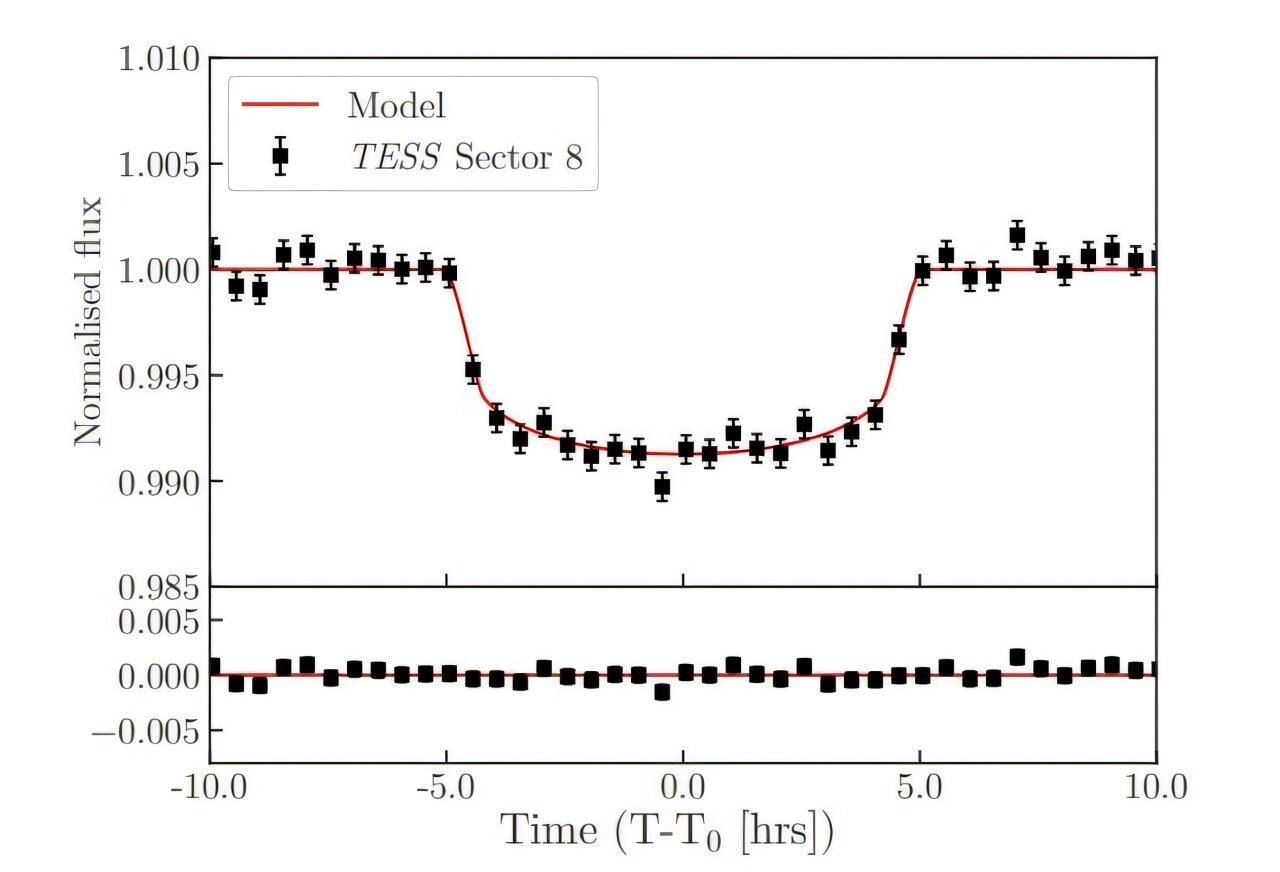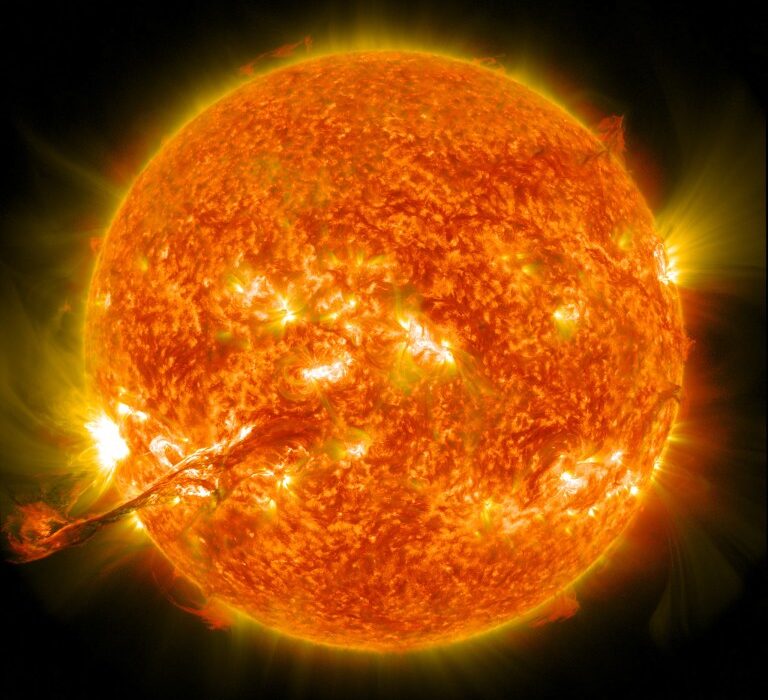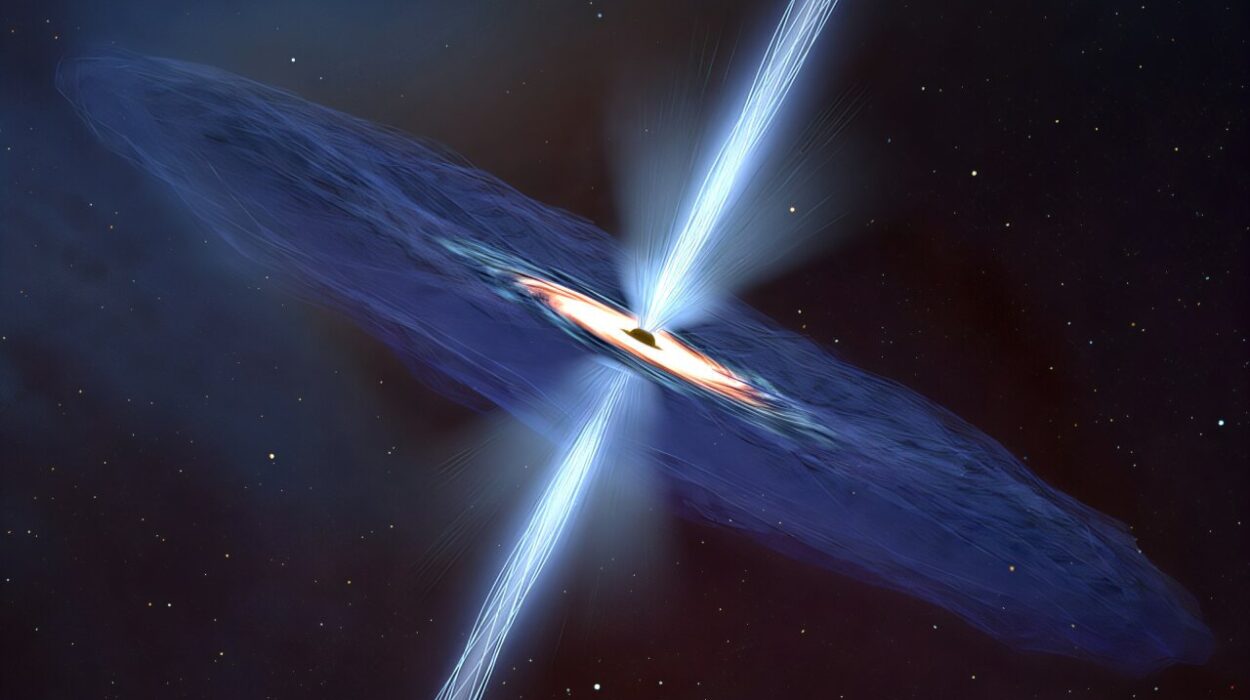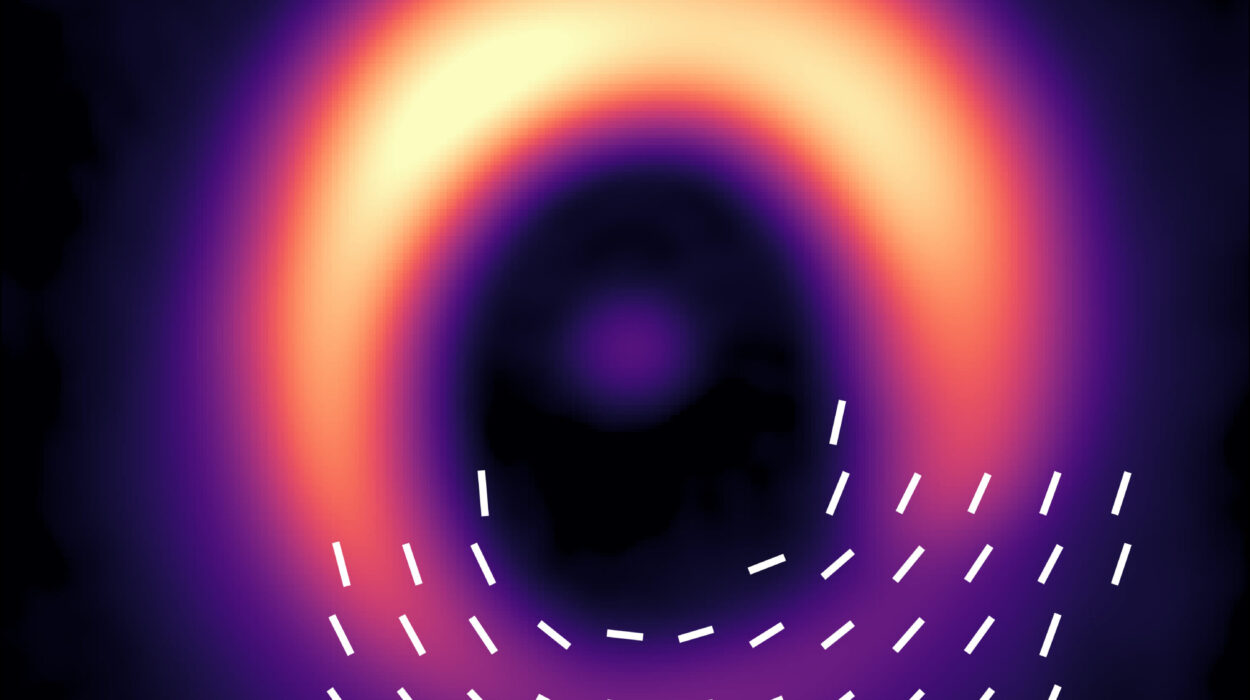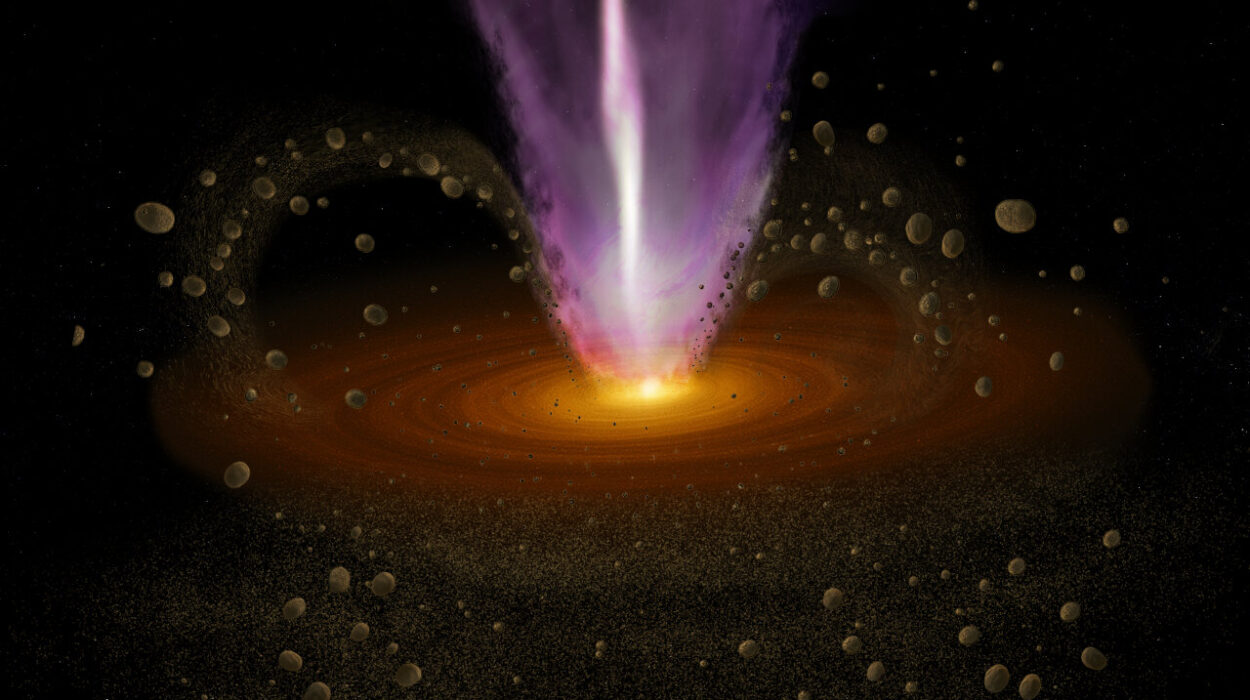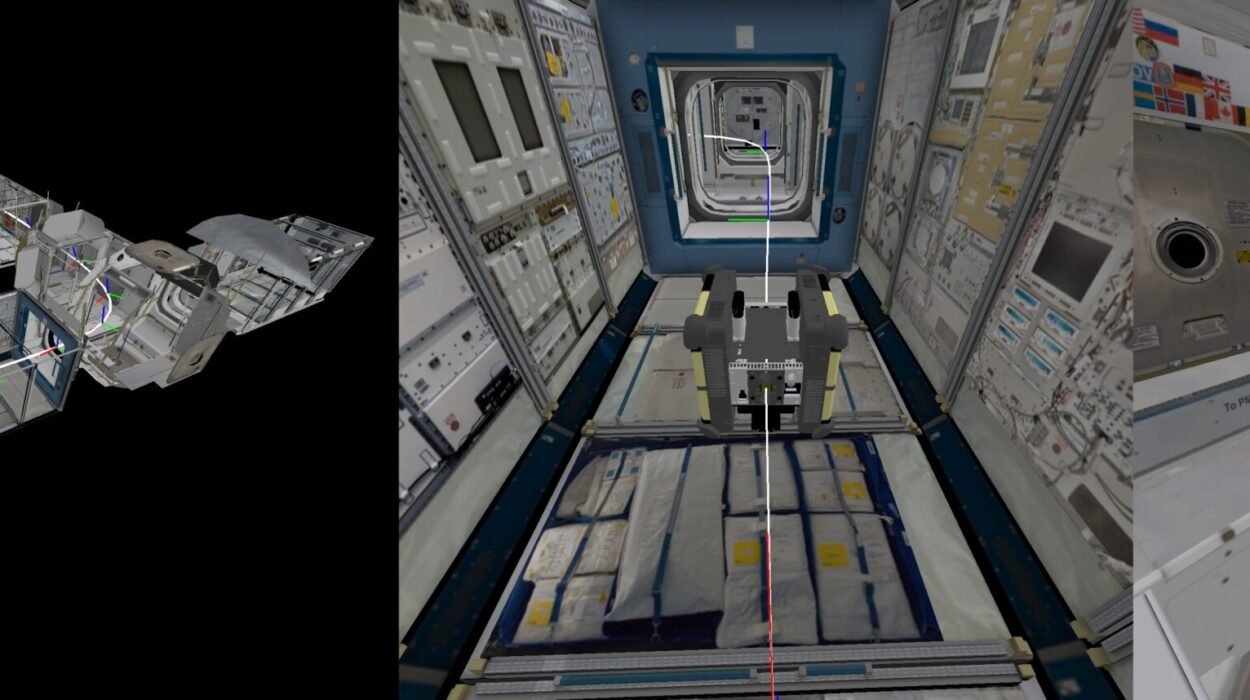An international team of astronomers, using data from the Transiting Exoplanet Survey Satellite (TESS) and the Next Generation Transit Survey (NGTS), has discovered a new and intriguing eclipsing binary system with relatively low mass and a remarkably long orbital period. This finding is outlined in a paper published in the Monthly Notices of the Royal Astronomical Society, marking a significant contribution to our understanding of low-mass stars.
The Importance of M Dwarfs in Eclipsing Binaries
Eclipsing binaries (EBs) are star systems in which two stars orbit each other in such a way that they regularly eclipse one another from our viewpoint on Earth. These systems are particularly valuable to astronomers because the mutual eclipses allow for precise measurements of key stellar parameters, such as mass, radius, and effective temperature. This level of detailed observation helps to build accurate models of stellar evolution. EBs that include M dwarfs—smaller, cooler stars that make up about 70% of the stars in the Milky Way—are especially important because they can provide vital clues about the behavior and properties of low-mass stars.
M dwarfs are particularly challenging to study as their small size, low temperature, and faint brightness make them difficult to detect and analyze. By studying these stars in eclipsing binaries, scientists can learn more about their intrinsic properties without the need for indirect methods, leading to clearer tests for stellar evolutionary models.
Most eclipsing binaries with M dwarf components have short orbital periods—usually on the order of days—due to strong tidal forces that can distort their orbits. However, the new system in question, discovered by the team led by Toby Rodel from Queen’s University Belfast, offers a rare and valuable opportunity for astronomers to study an eclipsing binary with a low-mass M dwarf that has both a long orbital period and low tidal interactions. This combination minimizes the chance of orbital distortion and maximizes the ability to observe the system’s natural characteristics, allowing astronomers to obtain detailed insights into how low-mass stars evolve over time.
Discovery of NGTS-EB-7 AB
The newly discovered system, designated NGTS-EB-7 AB, is located approximately 1,500 light years away in the constellation of the Kingfisher. It was identified through the joint efforts of the TESS and NGTS missions. TESS, launched in 2018 to detect exoplanets using the transit method, monitors large sections of the sky over long periods, making it especially useful for discovering distant celestial objects. The NGTS is a ground-based survey designed to provide highly precise photometric observations to support discoveries from space-based observatories like TESS.
In the case of NGTS-EB-7 AB, TESS first detected the system’s transit in its Full Frame Images (FFIs) during observations conducted in sectors 6, 7, and 8 with a 30-minute cadence. Later, the system was more closely monitored by NGTS, which captured data with a 10-second exposure interval over several months in 2022. The precise measurements obtained from both TESS and NGTS were critical in identifying the system’s physical characteristics and confirming its long orbital period and the eccentricity of its orbit.
NGTS-EB-7 AB consists of two stellar components. The primary star, NGTS-EB-7 A, is an evolved G-type star, which is similar to our Sun but somewhat larger and heavier. The secondary star, NGTS-EB-7 B, is a late-type M dwarf, which is much smaller and cooler compared to the G-type star.
Stellar Parameters of NGTS-EB-7 A
The primary star in this system, NGTS-EB-7 A, is a highly evolved G-type star. It has about 1.13 times the mass of the Sun and a radius that is 1.45 times larger than that of the Sun. The star’s effective temperature is around 5,770 K, which places it in the same temperature range as the Sun, making it a familiar type of star but with a somewhat longer lifespan due to its advanced evolutionary stage. Based on various modeling techniques and detailed observations, astronomers estimate the age of NGTS-EB-7 A to be about 10 billion years, comparable to the age of the Sun, but much older than most of the stars typically found in similar eclipsing binary systems.
This primary star is also believed to be slightly metal-rich, with a metallicity of 0.26 dex. Metallicity plays an important role in understanding stellar formation and evolution. A higher metallicity suggests a star formed in a more enriched part of the galaxy, potentially undergoing different conditions than stars with lower metal content.
Stellar Parameters of NGTS-EB-7 B
The companion star, NGTS-EB-7 B, is a much smaller M dwarf. It has about 0.096 times the mass of the Sun and a radius roughly 0.125 times the size of our Sun. These dimensions place it near the hydrogen-burning limit—the threshold separating main-sequence stars from brown dwarfs, which are often referred to as “failed stars” because they do not have enough mass to sustain hydrogen fusion in their cores.
The M dwarf in NGTS-EB-7 AB orbits its companion star on a highly eccentric orbit, with an orbital eccentricity of 0.71. This is considered a rather large eccentricity compared to typical M-dwarf eclipsing binaries, where the orbits are usually more circular. The relatively high eccentricity could potentially lead to additional dynamical interactions between the two stars, influencing their future evolution. This eccentricity also makes the system a fascinating object for further observational study, particularly concerning its interactions and the effects these may have on the stars’ evolution.
Importance of the Discovery
The discovery of NGTS-EB-7 AB has several important implications for our understanding of low-mass stars and their evolution. The relatively long orbital period—193.36 days—and low tidal interaction between the two stars provide a unique environment for studying stellar properties free from many of the distortions that affect other short-period binary systems. Additionally, the high eccentricity of the orbit adds another layer of complexity that could yield valuable insights into the orbital dynamics of M-dwarf stars.
In their paper, the authors highlight the significance of this discovery as one of the most eccentric and longest-period low-mass eclipsing binary systems discovered to date. The system’s characteristics make it a prime candidate for further study, as it could provide a rare opportunity to test and refine existing stellar evolution models, particularly as they relate to low-mass stars at the hydrogen-burning limit.
Looking to the future, the authors expect the upcoming PLATO mission—an ambitious space mission focused on finding Earth-like exoplanets and studying stars—to offer additional insights into the properties of NGTS-EB-7 B. One of the exciting aspects of future observations is the potential to observe the secondary eclipse of NGTS-EB-7 B, during which the M dwarf will pass behind its companion star from our point of view. This event could allow astronomers to directly measure the temperature and further refine our understanding of M dwarfs and their physical characteristics.
Reference: Toby Rodel et al., NGTS-EB-7, an eccentric, long-period, low-mass eclipsing binary, Monthly Notices of the Royal Astronomical Society (2024). DOI: 10.1093/mnras/stae2799. On arXiv: DOI: 10.48550/arxiv.2501.04523
